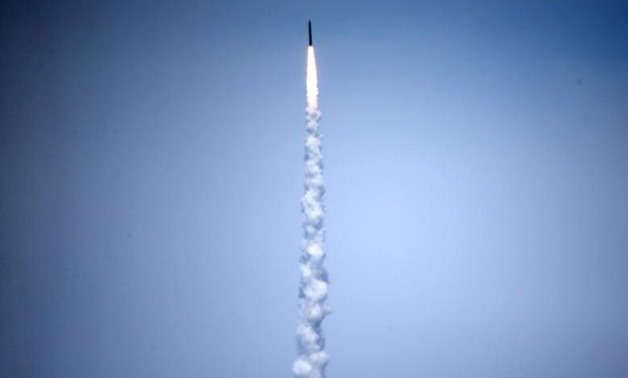
The Ground-based Midcourse Defense (GMD) element of the U.S. ballistic missile defense system launches during a flight test from Vandenberg Air Force Base, California, U.S., May 30, 2017. REUTERS/Lucy Nicholson
WASHINGTON - 31 May 2017: The U.S. military said on Wednesday that a successful test of defenses against an attack from an intercontinental ballistic missile shows the United States is staying ahead of the evolving ICBM threat from countries such as North Korea.
Vice Admiral Jim Syring, the director of the Missile Defense Agency, said Tuesday's test, at a cost of $244 million, portrayed a "very realistic" scenario based on American intelligence about where it believed North Korean or Iranian missile programs would be in 2020.
"I was confident before the test that we had the capability to defeat any threat that they would throw at us. And I'm even more confident today after seeing the intercept test yesterday that we continue to be on that course," Syring said a news briefing.
A type of ICBM was fired from the Kwajalein Atoll in the Marshall Islands toward the waters south of Alaska. The U.S. military then fired a missile to intercept it from Vandenberg Air Force Base in California. The test ended with a head-on strike, resulting in complete obliteration.
Experts compare the feat to hitting a bullet with another bullet and note the complexity is magnified by the distances involved. The continental United States is around 9,000 km (5,500 miles) from North Korea. ICBMs have a minimum range of about 5,500 km (3,400 miles), but some are designed to travel 10,000 km (6,200 miles) or farther.
"The interceptor that we flew yesterday certainly keeps pace with and I would actually say helps us outpace the threat through 2020," Syring said.
The test followed an increase in the pace of North Korean missile tests over the past year in its declared effort to develop an ICBM that has the ability to strike the U.S. mainland.
Tuesday's intercept was the first live-fire test against a simulated ICBM for the Ground-based Midcourse Defense (GMD), managed by Boeing Co (BA.N).
Previously, the GMD system had successfully hit its target in only nine of 17 tests since 1999. The last test was in 2014. However, the interceptor technology has been making steady advances throughout the life of the program.
Syring said Tuesday's test was made even more complicated by the use of decoys designed to throw off the interceptor. More tests were planned in coming years to advance U.S. defense capabilities, he said.
Syring said the ICBM targeted in the test was representative of potential missiles that could be fielded by North Korea or Iran. Iran's missile program is considered a threat by the United States and its allies in the Middle East.
Iran's Islamic Revolutionary Guards Corps (IRGC) test-fired several ballistic missiles in May and an IRGC official announced last week that Iran built a third underground ballistic missile production factory and said it would keep advancing its program.
(Reporting by Phil Stewart; Editing by Grant McCool)

Comments
Leave a Comment